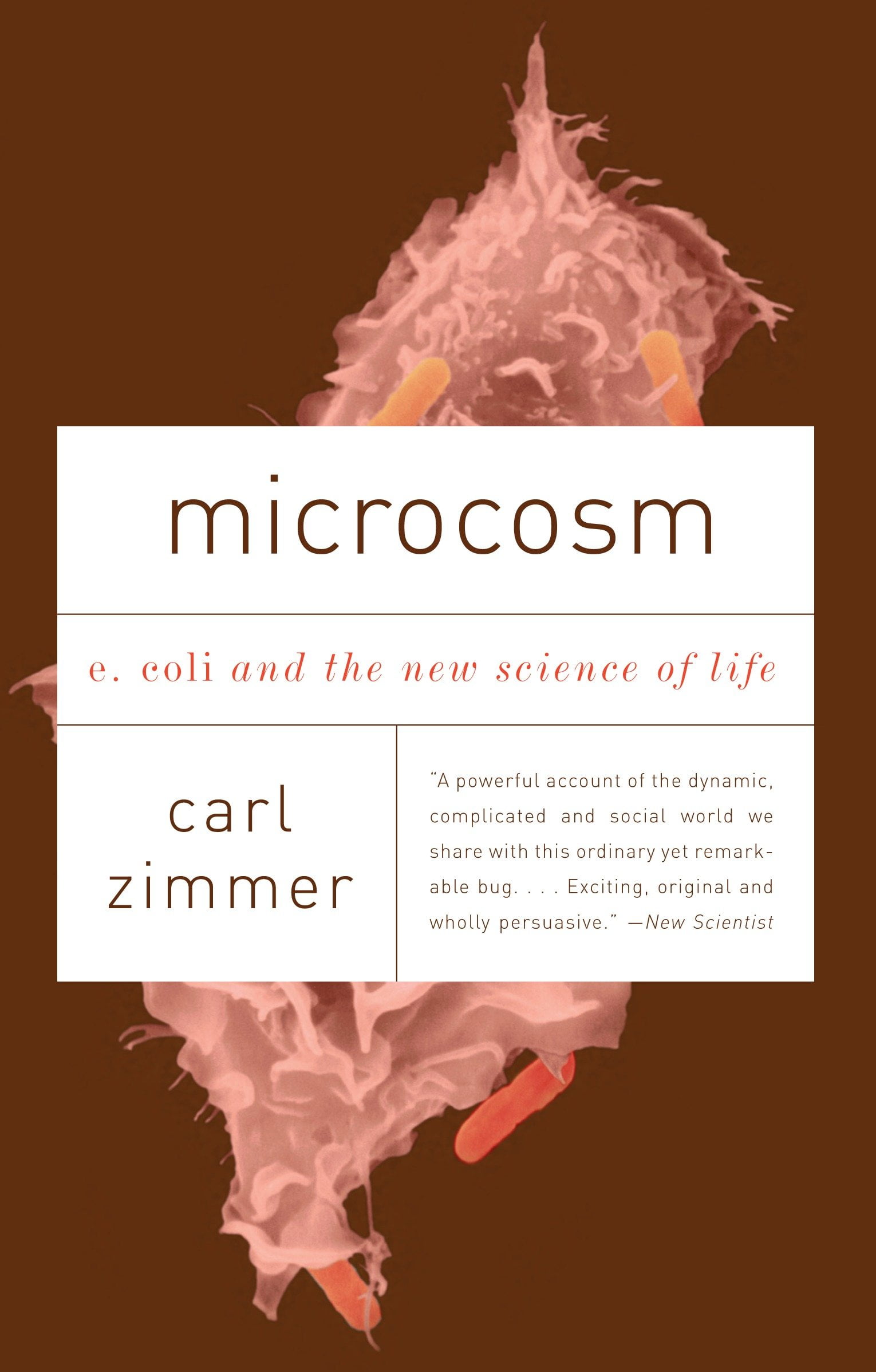

This blog in response to comments from secondary school biology teachers. Zimmer (2008) Microcosm: E.coliand the new science of life. That is so neat 🙂 I knew that E.coli could move around, towards or away from various stimuli, but I had no idea how it detected them. If the serine levels drop because a tumble has left the bacterium facing away from the source, tumbles come more frequently until a random swerve puts the organism back on track for serine once more. If they measure a rising concentration of serine, the flagella will beat for longer before a tumble, and the bacterium moves towards the serine source. There are five types of these cellular sensors, and when they detect a particular molecule, such as serine, this sets off a communication cascade within the cell. At the tip of an E.coli cell, thousands of sensory proteins project through its cell membrane – Zimmer likens them to a ‘microbial tongue’. And as for the control of runs & tumbles – it turns out that E.coli has a sense of taste. Microcosm delivers what a science book should it reveals the new and. He won a 2007 National Academies Communication Award, the highest honor for science writing. Well, first of all, E.coli isn’t really all that simple: Zimmer’s entire book points out time & time again what a complex little organism it is. Carl Zimmer writes about science for The New York Times, and his work also appears in National Geographic, Scientific American, and Discover, where he is a contributing editor. But how does something as simple as a bacterium know which way to go? If a tumble points it away from the serine source, the next run is shorter. As long as the bacterium is moving towards a serine source (ie in the direction of increasing concentration), each ‘run’ is longer. And it can home in on ‘attractive’ chemicals, eg the amino acid serine, using nothing more than these runs & tumbles.
#Microcosm carl zimmer series
It moves in a series of brief, random runs, separated by tumbles – each tumble sets the bacterium facing in a new direction. (It has been suggested to me that the subject of intestinal bacteria isn’t perhaps ideal for looking into while eating…) Anyway, one of the topics he touches on is the way that E.coli moves around.Į.coli can get around using flagella – long, hair-like structures that project through its cell wall and spin like propellors. This was via my current lunch-time reading: Microcosm, by the most excellent science writer, Carl Zimmer.

But today it was biology – I found out that E.

But the opportunities are much wider than that – when I was developing the Science on the Farm website, I started learning about technology, soil science, all sorts of stuff (& I loved it). I have to try to keep up-to-date in the areas of biology that I teach about, & this means a lot of reading & talking with people. It's also a story of life itself-of its rules, its mysteries, and its future.One of the things I love about my job is the endless opportunities to learn new things. Microcosm is the story of the one species on Earth that science knows best of all. coli grab headlines by causing deadly diseases, scientists are retooling the bacteria to produce everything from human insulin to jet fuel. coli's remarkable history, showing how scientists used it to discover how genes work and then to launch the entire biotechnology industry. In the tradition of classics like Lewis Thomas's Lives of a Cell, Carl Zimmer has written a fascinating and utterly accessible investigation of what it means to be alive. coli from the ground up, redefining our understanding of life on Earth. He reveals the many surprising and alarming parallels between E. coli's pivotal role in the history of biology, from the discovery of DNA to the latest advances in biotechnology. coli is notorious for making people gravely ill, but engineered strains of the bacteria save millions of lives each year.ĭespite its microscopic size, E.coli contains more than four thousand genes that operate a staggeringly sophisticated network of millions of molecules. A Best Book of the YearSeed Magazine Granta Magazine The Plain-DealerIn this fascinating and utterly engaging book, Carl Zimmer traces E. They will inhabit each and every one of us until we die. Within days of being born, we are infected with billions of E.


 0 kommentar(er)
0 kommentar(er)
